
Muhammad Zia-ul-Haq was a Pakistani military officer who served as the sixth president of Pakistan from 1978 until his death. He also served as the second chief of the army staff of the Pakistan Army from 1 March 1976 until his death.
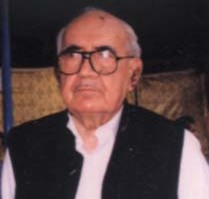
Ghulam Ishaq Khan, commonly known by his initials GIK, was a Pakistani bureaucrat, politician and statesman who served as the seventh president of Pakistan from 1988 to 1993. He previously served as Chairman of the Senate from 1985 to 1988 under president Muhammad Zia-ul-Haq, and was sworn in shortly after Zia's death.

General Mirza Aslam BegNI(M) HI(M) SBt LoM, also known as M. A. Beg, is a retired Pakistani four-star general who served as the third Chief of Army Staff of the Pakistan Army from 1988 until his retirement in 1991. His appointment as chief of army staff came when his predecessor, President General Muhammad Zia-ul-Haq, died in an air crash on 17 August 1988.

The Pakistan Army, commonly known as the Pak Army is the land service branch and the largest component of the Pakistan Armed Forces. The president of Pakistan is the supreme commander of the army. The Chief of Army Staff (COAS), a four-star general, commands the army. The Army was established in August 1947 after Pakistan gained independence from the United Kingdom. According to statistics provided by the International Institute for Strategic Studies (IISS) in 2023, the Pakistan Army has approximately 560,000 active duty personnel, supported by the Pakistan Army Reserve, the National Guard and the Civil Armed Forces. Pakistan Army is the sixth-largest army of the world and the largest of the Muslim world.

General Krishnaswamy "Sundarji" Sundararajan, was the Chief of the Army Staff of the Indian Army from 1986 to 1988. He was the last former British Indian Army officer to command the Indian Army.

Rahimuddin Khan was a general of the Pakistan Army who served as the 4th Chairman Joint Chiefs of Staff Committee from 1984 to 1987, after serving as the 7th governor of Balochistan from 1978 to 1984. He also served as the 16th governor of Sindh in 1988.

The military history of Pakistan encompasses an immense panorama of conflicts and struggles extending for more than 2,000 years across areas constituting modern Pakistan and greater South Asia. The history of the modern-day military of Pakistan began in 1947, when Pakistan achieved its independence as a modern nation.
Indian military fiction refers to fiction about the Military of India or military fiction written by Indians.

Air Chief Marshal (ACM) Mohammad Anwar ShamimNI(M) HI(M) SJ SI(M) OI LoM ; was a senior air officer of the Pakistan Air Force (PAF) and was the Chief of Air Staff, appointed to the post in 1978 until retiring in 1985.
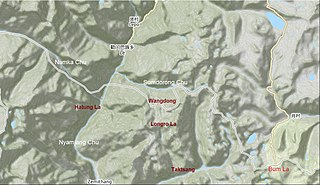
In 1986–87, a military standoff took place between India and China in the Sumdorong Chu Valley bordering the Tawang district, Arunachal Pradesh and Cona County, Tibet. It was initiated by China moving a company of troops to Wangdung, a pasture to the south of Sumdorong Chu that India believed to be its territory. The Indian troops stood their ground on the neighbouring Longro La ridge and both the sides moved a large number of troops to the border. The crisis was diffused after the visit of Indian External Affairs minister to Beijing in May 1987. The standoff gave rise to fears of escalation. Subsequently, India and China formulated agreements for managing future border tensions.
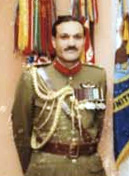
General Khalid Mahmud ArifNI(M) HI(M) SI(M) SBt LoM popularly known as K.M. Arif, was a senior officer of the Pakistan Army, serving as the vice-chief of army staff under President Zia-ul-Haq, who retained the command of the army since 1976.
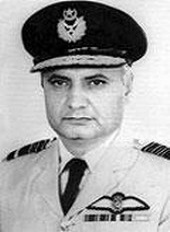
Air Chief Marshal Zulfiqar Ali KhanNI(M), was the first four-star air officer in the Pakistan Air Force and later a diplomat. He was the Air Force's Chief of Air Staff from 15 April 1974 to 22 July 1978. Upon retirement, he served on a diplomatic assignment, and headed the diplomatic mission to the United States as Pakistan's ambassador from 1989 to 1990.
The political history of Pakistan is the narrative and analysis of political events, ideas, movements, and leaders of Pakistan. Pakistan gained independence from the United Kingdom on 14 August 1947, when the Presidencies and provinces of British India were divided by the United Kingdom, in a region which is commonly referred to as the Indian subcontinent. Since its independence, Pakistan has had a colorful yet turbulent political history at times, often characterized by martial law and inefficient leadership.
Cold Start is a military doctrine that was developed by the Indian Armed Forces for use in a possible war with Pakistan. It involves the various branches of India's military conducting offensive operations as part of unified battlegroups. The doctrine is intended to allow India's conventional forces to perform holding attacks to prevent a nuclear retaliation from Pakistan in case of a conflict. The first Integrated Battle Group is expected to be structured by the end of August 2019.
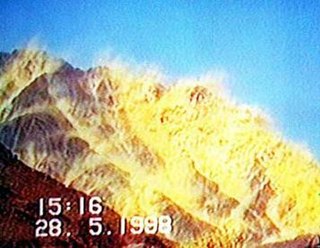
Project-706, also known as Project-786 was the codename of a research and development program to develop Pakistan's first nuclear weapons. The program was initiated by Prime Minister Zulfiqar Ali Bhutto in 1974 in response to the Indian nuclear tests conducted in May 1974. During the course of this program, Pakistani nuclear scientists and engineers developed the requisite nuclear infrastructure and gained expertise in the extraction, refining, processing and handling of fissile material with the ultimate goal of designing a nuclear device. These objectives were achieved by the early 1980s with the first successful cold test of a Pakistani nuclear device in 1983. The two institutions responsible for the execution of the program were the Pakistan Atomic Energy Commission and the Kahuta Research Laboratories, led by Munir Ahmed Khan and Abdul Qadeer Khan respectively. In 1976 an organization called Special Development Works (SDW) was created within the Pakistan Army, directly under the Chief of the Army Staff (Pakistan) (COAS). This organization worked closely with PAEC and KRL to secretly prepare the nuclear test sites in Baluchistan and other required civil infrastructure.
Lieutenant General Zahid Ali AkbarHI(M), SBt, PE, is a former engineering officer in the Pakistan Army Corps of Engineers, known for his role in Pakistan's acquisition of nuclear weapons, and directing the Engineering Research Laboratories (ERL), a top secret research facility developing the clandestine atom bomb project.
Chagai-II is the codename assigned to the second atomic test conducted by Pakistan, carried out on 30 May 1998 in the Kharan Desert in Balochistan Province of Pakistan. Chagai-II took place two days after Pakistan's first successful test, Chagai-I, which was carried out on 28 May 1998 in the Ras Koh area in Chagai District, Balochistan, Pakistan.

Pakistan and the Soviet Union had complex and tense relations. During the Cold War (1947–1991), Pakistan was a part of Western Bloc of the First World and a close ally of the United States.
The story of history of the Islamic Republic of Pakistan began on 14 August 1947 when the country came into being in the form of Dominion of Pakistan within the British Commonwealth as the result of Pakistan Movement and the partition of India. While the history of the Pakistani Nation according to the Pakistan government's official chronology started with the Islamic rule over Indian subcontinent by Muhammad bin Qasim which reached its zenith during Mughal Era. In 1947, Pakistan consisted of West Pakistan and East Pakistan. The President of All-India Muslim League and later the Pakistan Muslim League, Muhammad Ali Jinnah became Governor-General while the secretary general of the Muslim League, Liaquat Ali Khan became Prime Minister. The constitution of 1956 made Pakistan an Islamic democratic country.
Prem Nath Hoon was an Indian military officer who was the General Officer Commander in Chief of the Western Army of the Indian Armed Forces from 1986 to 1987. He had commanded mountain brigades, infantry brigades, infantry division and the XV Corps in Kashmir.












